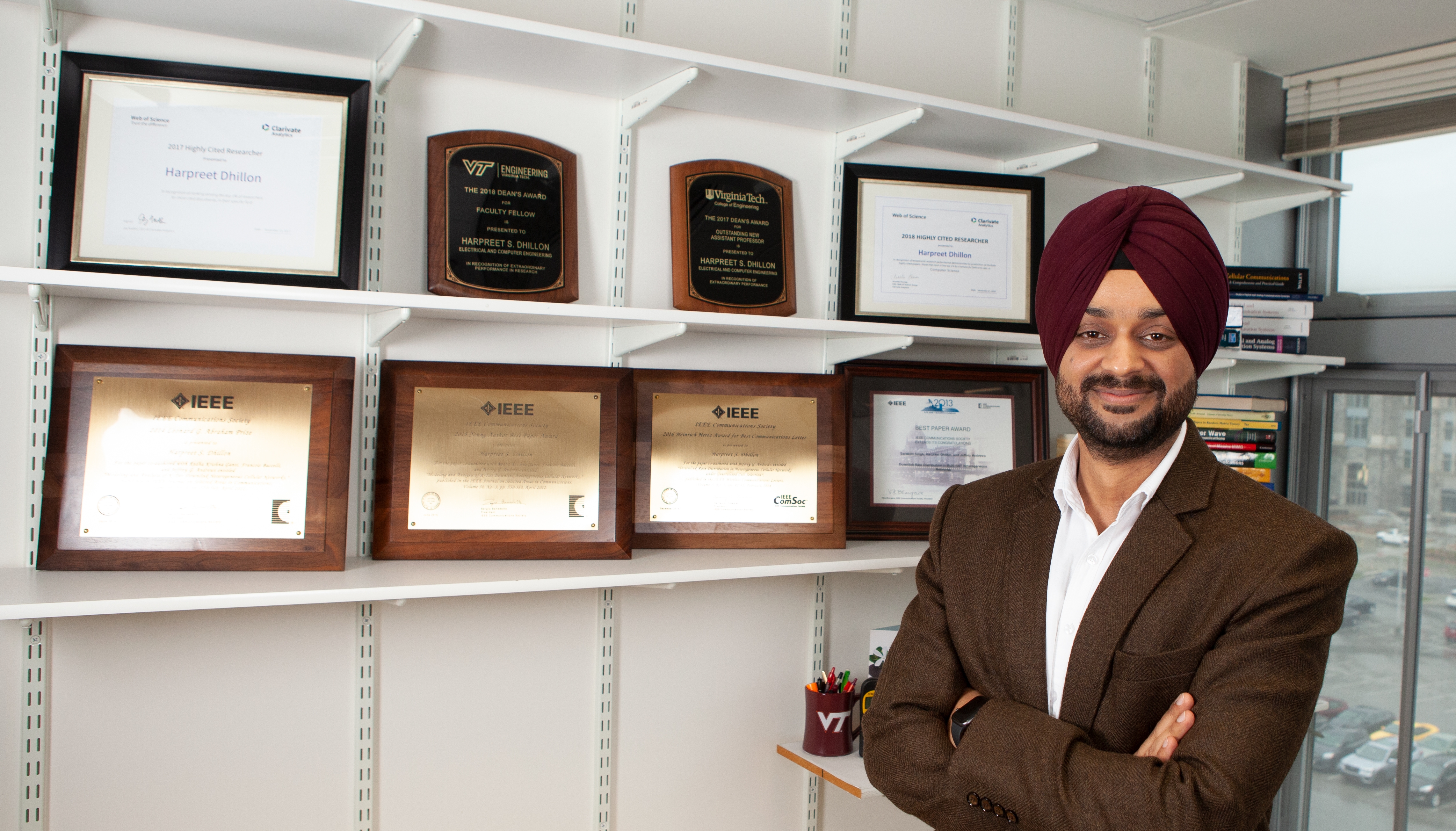Harpreet Dhillon named Clarivate Analytics Highly Cited Researcher
May 20, 2019

The general public typically only hears about research in its final stages—when a specific product is in development—not at the fundamental theory stage. Harpreet Dhillon, ECE assistant professor and Steven O. Lane Junior Faculty Fellow, has been making the news with his fundamental contributions to wireless network theory. Dhillon was included on the Clarivate Analytics Highly Cited Researcher list in both 2017 and 2018 for his research on the mathematical under-pinnings of wireless networks.
Clarative Analytics, formerly Thompson Reuters, tracks research and publications in many fields ranging from agricultural science to space science. To be included on the Highly Cited Researchers list, individuals must have publications from the past 11 years that are among the top one percent in their field for number of citations.
Dhillon’s research has contributed to the basic understanding of large-scale wireless networks. By answering fundamental questions in the field, his work acts as a foundation for the design and deployment of next-generation wireless networks.
His first highly cited paper came from his Ph.D. work at the University of Texas at Austin, where Dhillon advanced tools from the area of stochastic geometry to model large-scale heterogeneous wireless networks—and he has continued developing tools and models to study a variety of network configurations for the next generation of wireless networks.
Dhillon’s research interests are broadly in communications and networking. Some of his current research projects include internet of things (IoT), heterogenous cellular networks, and smart and connected communities.
Dhillon’s work has received numerous technical awards, including the 2016 IEEE Heinrich Hertz Award, the 2015 IEEE Communications Society Young Author Best Paper Award, and the 2014 IEEE Leonard G. Abraham Prize Paper Award.
Internet of things
The IoT is an emerging digital fabric that will integrate our physical world into computer networks by connecting billions of devices to the internet, according to Dhillon. “One of the key challenges is to power billions of small sensors that would make this digital fabric,” says Dhillon, who has been exploring energy-harvesting solutions to make these devices self-sufficient. “In particular, we are exploring the possibility of using existing radio-frequency waves to power these devices.”
Dhillon is also working on ambient backscatter communications, which allows these devices to operate at very low power by repurposing existing radio frequency waves for their own transmission.
Heterogeneous cellular networks
Dhillon continues to push the boundaries of heterogenous cellular networks. Driven by the consistently increasing demand for more capacity in the wireless spectrum, researchers are trying to find new ways of packing more signals into the same frequency bands—often by adding more base stations to the network. Dhillon is mathematically modeling and analyzing the performance of different base station configurations.
Smart and connected communities
Like IoT, vehicular communications will play a key role in the emergence of smart and connected communities. Whether operated by a human driver or fully autonomous, vehicles will need to communicate with each other and their environment. Because they need to maintain consistent communication on the move, while planning trajectories and maintaining a high degree of safety, vehicles pose particular communications challenges.
Dhillon’s group is working on a statistical model for a vehicular network that can take various road patterns into account.
Dhillon’s passion for math and engineering isn’t just personally fulfilling. It’s also providing frameworks for many of the technologies we will soon be taking for granted.


